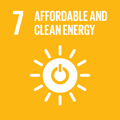- Docente: Maria Carmela Iapalucci
- Credits: 10
- SSD: CHIM/03
- Language: Italian
- Moduli: Maria Carmela Iapalucci (Modulo 1) Rita Mazzoni (Modulo 2) Maria Carmela Iapalucci (Modulo 3)
- Teaching Mode: Traditional lectures (Modulo 1) Traditional lectures (Modulo 2) Traditional lectures (Modulo 3)
- Campus: Bologna
- Corso: First cycle degree programme (L) in Industrial Chemistry (cod. 8513)
-
from Sep 18, 2024 to Dec 20, 2024
-
from Sep 16, 2024 to Dec 19, 2024
-
from Sep 16, 2024 to Jan 09, 2025
Learning outcomes
The course offers the fundamentals principles for understanding inorganic chemistry trough the descriptions of important and significant aspects of the structure and chemistry of inorganic compounds. Particular attention will be devoted to the chemistry of transition elements in their low, medium and high oxidation states. The objective of the course, developed in strictly connession with selected study questions and practical inorganic laboratorium experiments, is to furnish fundamentals knowledge to understand the relations between structures, chemical and spectroscopic properties of inorganic compounds.
Course contents
Prerequisites: ability to write chemical reactions; understanding of the equilibrium concepts, both homogeneous and heterogeneous. Knowledge of the chemical geometries and bonding properties of given chemical compounds. Thermodynamic concepts and spontaneous reactions. Basic laboratory skills: solution preparations, quantitative determination of reagent and product masses and reaction yields.
Program:The periodic chart and the atomic properties of the elements. Symmetry and use of the point group symmetry. Bonding models in Inorganic Chemistry: A) Ionic compounds B) covalent bond: valence bond and molecular orbital theory. The solid state: conductivity in ionic solids and in metals. The band theory. General properties of transition elements. The coordination chemistry: A) bonding, spectra and magnetism; B) Reactions, kinetics and mechanisms. The coordination numbers: octahedral, tetrahedral and square planar complexes. The low oxidation states and the organometallic compounds. The organometallic chemistry: reactions of carbonyl and olefine complexes. Main catalytic reactions by organometallic compounds.
Acidity of the cations; basicity of oxo anions and oxides. Polinuclear oxo anions: borates and silicates. Sol-gel synthesis of SiO2. The chemistry and reactions of the first transitions elements, from titanium to copper, in their stable oxidation states.
Readings/Bibliography
CHIMICA INORGANICA - J.E. HUHEEY; E.A. KEITER; R.L. KEITER – Piccin
LA CHIMICA INORGANICA –M. WELLER; T. OVERTON; J. ROURKE; F. ARMSTRONG - ZanicchelliCHIMICA INORGANICA – B. IVANO; C. LUCHINAT; F. MANI - CEA
PRINCIPLES of INORGANIC CHEMISTRY - B.W. PFENNIG; - Wiley
Teaching methods
Teaching methods include: lectures, exercises and laboratory experiments. Exercises consist of numerical problems and case studies. These are intended to facilitate the review and extend comprehension of all topics. The lab experiences are designed for deepening the students' understanding of inorganic chemistry and, for their nature, constitute an important training for the manipulation of inorganic substances under safety conditions. The laboratory-activity attendance is mandatory for the final exam. At the end of the course all lab reports must be delivered.
Assessment methods
Assessment of the learning outcomes is carried out by a written test and an oral exam. The test, which includes problems, exercises and open answers, is passed with a score equal or higher than 18/30. During the course, examples of problems and questions similar to those of the final exam are provided. Access to oral exam is possible after passing the written test. Oral exam is aimed at evaluating the ability to correlate the nature and composition of inorganic compounds with their physico-chemical properties. The final mark takes into consideration both theoretical and laboratory competences (with a contribution of 70% e 30%, respectively). The final written test can be replaced by two tests taken during the course (one at about half of the program and the other at the end of the program). The average score of the two tests provides the final written mark. Registration to the written and oral exams is required through “Alma Esami” web platform, in observation to the stated deadlines.
Teaching tools
Blackboard and PowerPoint presentations for lectures. Documents and slides are available to students on the platform
Office hours
See the website of Maria Carmela Iapalucci
See the website of Rita Mazzoni
SDGs


This teaching activity contributes to the achievement of the Sustainable Development Goals of the UN 2030 Agenda.
